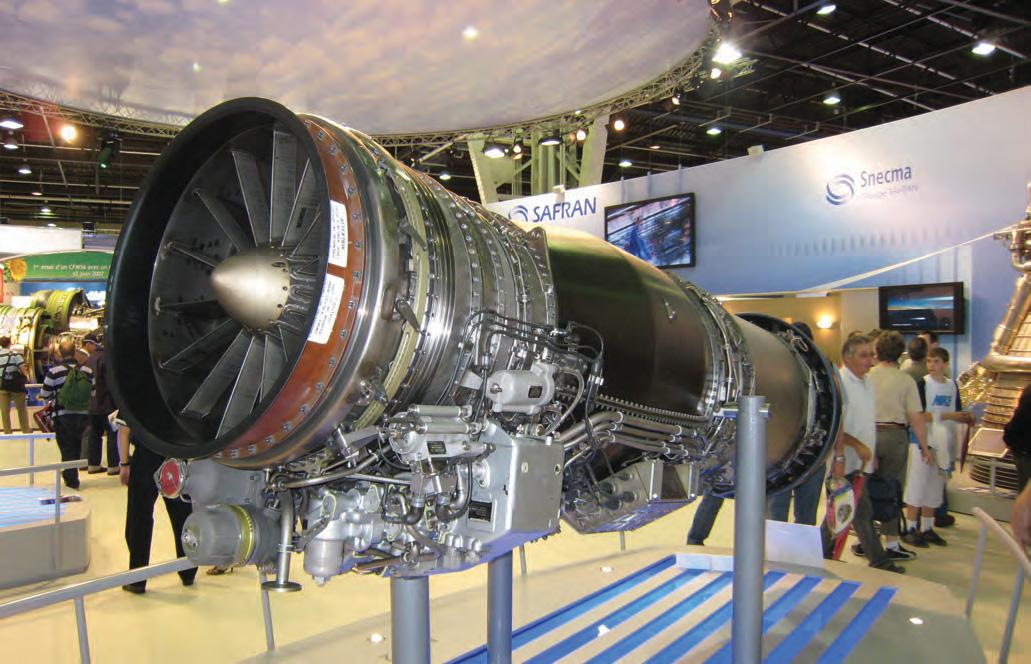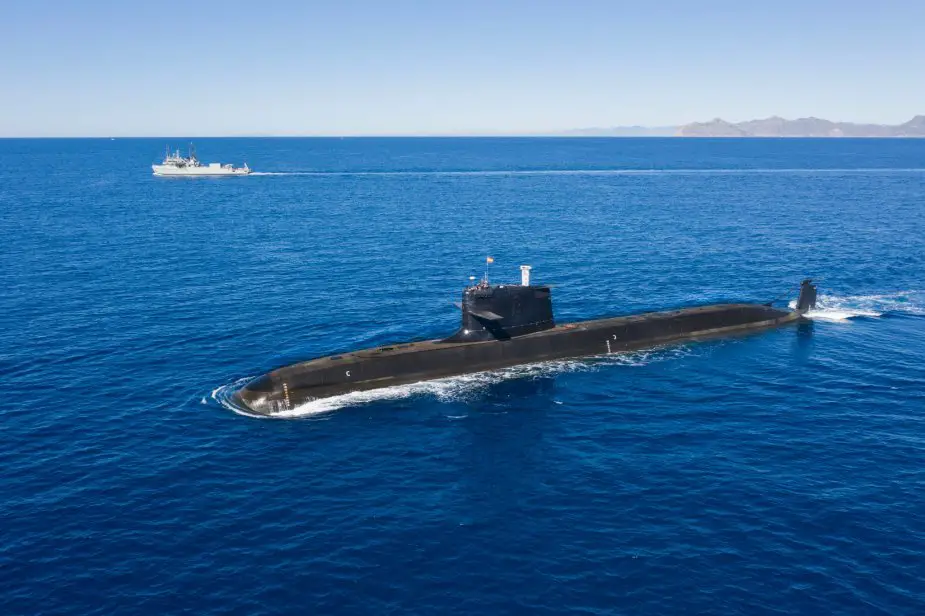SOURCE: RAUNAK KUNDE / NEWS BEAT / IDRW.ORG


According to leaked internal reports from the USAF, the true capabilities of China’s PL-15 Very Long Range Air-to-Air Missile (BVRAAM) might be overstated. While China claims a range of 200 kilometers, the USAF report suggests this may be significantly reduced due to launch restrictions.
The report indicates that achieving the advertised 200km range hinges on a critical launch condition: the fighter jet firing the missile must be travelling at Mach 1.2 at an altitude of 10km. However, real-world combat scenarios often involve different launch conditions.
Continue readingSOURCE: RAUNAK KUNDE / NEWS BEAT / IDRW.ORG


Steel Authority of India Limited’s (SAIL) Bhilai Steel Plant (BSP) is playing a critical role in India’s indigenous underwater defence capabilities. The plant is pioneering the development of next-generation steel specifically designed for the S5 class of nuclear-powered ballistic missile submarines (SSBNs).
SAIL-Bhilai’s expertise in high-grade steel is not new. The plant previously developed special steel plates for the prestigious Vikrant-class aircraft carrier program. Now, they’re leveraging this knowledge to create an optimized variant specifically for submarine construction.
Continue readingSOURCE: RAUNAK KUNDE / NEWS BEAT / IDRW.ORG


The Indian Navy is actively exploring innovative solutions to address the shortage of minesweeper boats in its fleet. One such solution is the deployment of Micro Autonomous Underwater Vehicles (Micro AUVs) for minesweeping operations.
Developed by Bharat Electronics Limited (BEL), these Micro AUVs are designed for efficiency and manoeuvrability. With a length of only 2.5 meters, they can navigate areas inaccessible to larger vessels. Their endurance of 7-9 hours allows them to conduct extensive mine clearance missions.
Continue readingSOURCE: IDRW.ORG.


India’s Defence Research and Development Organisation (DRDO) is setting its sights on the high seas with a project for a mobile, sea-based missile launch platform. This innovative concept promises to revolutionize missile testing, particularly for smaller missiles in the initial development stages.
Traditionally, missile testing occurs at dedicated launch pads located inland. While these facilities serve their purpose, they come with limitations. Testing a new missile, especially one with a higher risk of malfunction, often necessitates clearing nearby villages for safety reasons. This disrupts communities and can be a logistical nightmare.
Continue readingSOURCE: IDRW.ORG.


India’s Hindustan Aeronautics Limited (HAL) is making strides in developing a next-generation combat drone – the CATS Warrior. This loyal wingman program aims to provide the Indian Air Force (IAF) with a powerful unmanned aerial vehicle (UAV) designed for seamless cooperation with manned fighter jets.
The CATS Warrior will boast a composite airframe, a key factor in maintaining its low observable characteristics – a critical aspect of modern aerial warfare. The airframe is constructed from advanced composite materials, ensuring the platform maintains low observable characteristics. This translates to a reduced radar signature, making it harder for enemy defenses to detect.
Continue readingSOURCE: IDRW.ORG.

Germany has taken a significant step in its defense relationship with India by lifting restrictions on the sale of small arms. This move opens the door for the Indian military and state police forces to directly purchase German-made weaponry.
Previously, strict German regulations limited small arms exports to NATO countries and close allies. However, recent developments signal a shift in policy. Earlier this month, Germany approved a request from India’s elite National Security Guard (NSG) to acquire spare parts and accessories for their existing MP5 submachine guns, manufactured by the renowned German firm Heckler & Koch.
Continue readingSOURCE: IDRW.ORG.


India’s quest for self-reliance in its defense sector takes a significant step forward with collaborative efforts between French engine manufacturer Safran and Hindustan Aeronautics Limited (HAL). This partnership holds promise for both local production of key engine components and the establishment of an advanced MRO facility for Rafale fighter jets.
Negotiations between Safran and HAL pave the way for the potential local manufacture of certain M-88 engine components. The M-88 engine is the powerhouse behind the Rafale fighter jets recently inducted into the Indian Air Force. This move signifies India’s commitment to reduce dependence on foreign suppliers for critical components and foster its own aerospace manufacturing capabilities.
Continue readingSOURCE: RAUNAK KUNDE / NEWS BEAT / IDRW.ORG


Larsen & Toubro (L&T) Defence, led by Executive Vice President and Head Arun Ramchandani, has confirmed a key aspect of its joint bid with Navantia for the Indian Navy’s Project 75I tender. The bid proposes the S-80 Plus class submarines, with a significant focus on maximizing local Indian content.
If their bid is chosen, L&T-Navantia promises that nearly 60% of the components used in the S-80 Plus submarines constructed for India will be sourced locally. This signifies a substantial commitment to India’s “Make in India” initiative, promoting domestic manufacturing and technological expertise.
Continue readingSOURCE: RAUNAK KUNDE / NEWS BEAT / IDRW.ORG


Dassault Aviation, the French manufacturer of the Rafale fighter jet, is making a strategic move to secure a larger role in India’s aerospace industry. The company has reportedly conveyed to Indian Air Force (IAF) and Ministry of Defence (MoD) officials that it can begin Rafale production in India, but with one key condition: acquiring a 100% stake in Dassault Reliance Aerospace Ltd (DRAL).
Dassault’s proposal is enticing. The company claims its Indian facility, upon receiving full ownership, could achieve a production rate of two Rafale jets per month. This translates to potentially delivering the entire 114 jets envisioned under the IAF’s upcoming Multi-Role Fighter Aircraft (MRFA) tender within five years.
Continue readingSOURCE: RAUNAK KUNDE / NEWS BEAT / IDRW.ORG


NewSpace Research and Technologies (NRT), a Bengaluru-based company, has sent ripples through the defence industry by hinting at two significant additions to its swarming platform portfolio. While details remain scarce, NRT’s unveiling of Unmanned Ground Vehicle (UGV) and Unmanned Surface Vehicle (USV) integrations with their MOSAIC intelligence suite suggests a bold step towards more comprehensive unmanned warfare solutions.
NRT’s MOSAIC suite has garnered considerable attention for its ability to orchestrate swarming tactics in unmanned aerial vehicles (UAVs). This technology empowers UAVs to collaborate in decentralized fused teaming missions, making them highly adaptable and effective.
Continue readingSOURCE: IDRW.ORG.


The Indian Air Force (IAF) is taking a significant step towards self-reliance in critical defense equipment. Partnering with the indigenous defense production industry under the Make-II procedure of the Defence Acquisition Procedure (DAP) 2020, the IAF is set to design and develop a “Common Air-to-Ground Launcher” for its Su-30 MKI fighter jets. This project, approved on March 18th, 2024.
Imagine a versatile equipment that can transform the Su-30 MKI’s offensive capabilities. The Common Launcher acts as a universal carrier, enabling the aircraft to carry a wider range of weapons and pods based on mission requirements. Currently, the Su-30 MKI relies on various launchers/adapters supplied by the Original Equipment Manufacturer (OEM), each specific to a particular weapon type.
Continue readingSOURCE: IDRW.ORG TEAM


The recent interception of 110 ballistic missiles fired by Iran by Israeli defense forces has garnered significant attention worldwide. However, for India, this event holds particular significance due to the close ties between the two nations in the realm of defense technology and missile defense systems.
India’s interest in the Israeli interception capabilities stems from its own efforts to bolster its defense against ballistic missile threats, particularly from neighboring adversaries like Pakistan. India has long been a beneficiary of Israeli defense technology, including the Anti-Ballistic Missile (ABM) systems.
Continue readingSOURCE: RAUNAK KUNDE / NEWS BEAT / IDRW.ORG


India’s Defence Research and Development Organisation (DRDO) is seeking the Indian Army’s approval to develop an unmanned ground combat vehicle (UGV) based on the country’s Arjun Mk 1A main battle tank.
The proposal, put forward in 2022 by DRDO’s Combat Vehicles Research and Development Establishment (CVRDE), envisions a UGV leveraging the Arjun Mk 1A’s robust design and capabilities. This new unmanned platform would be specifically tailored for India’s harsh desert terrain along the western border, where the Arjun Mk 1A is currently deployed.
Continue readingSOURCE: RAUNAK KUNDE / NEWS BEAT / IDRW.ORG


The Indian Navy is evaluating a potential upgrade package for its fleet of 12 Boeing P-8I maritime patrol aircraft. This upgrade, designated Increment 3 Block 2, promises significant improvements in the P-8I’s ability to detect, track, and engage even the most advanced submarines.
Boeing, the manufacturer of the P-8I, has reached out to several P-8 operators worldwide, including the Indian Navy, to promote this upgrade package. The focus lies on bolstering the aircraft’s capabilities for Anti-Submarine Warfare (ASW).
Continue readingSOURCE: RAUNAK KUNDE / NEWS BEAT / IDRW.ORG


NewSpace Research and Technologies (NRT) has achieved a significant breakthrough in the field of unmanned aerial vehicles (UAVs) with the successful initial testing of its fixed-wing swarming UAV stack. This cutting-edge technology has the potential to revolutionize aerial combat operations.
The core of NRT’s achievement lies in its MOSAIC intelligence suite. This suite empowers UAVs to conduct decentralized fused teaming missions. During the initial tests, various modules of the MOSAIC system were evaluated for their ability to create combat mass and achieve air-launched effects.
Continue reading